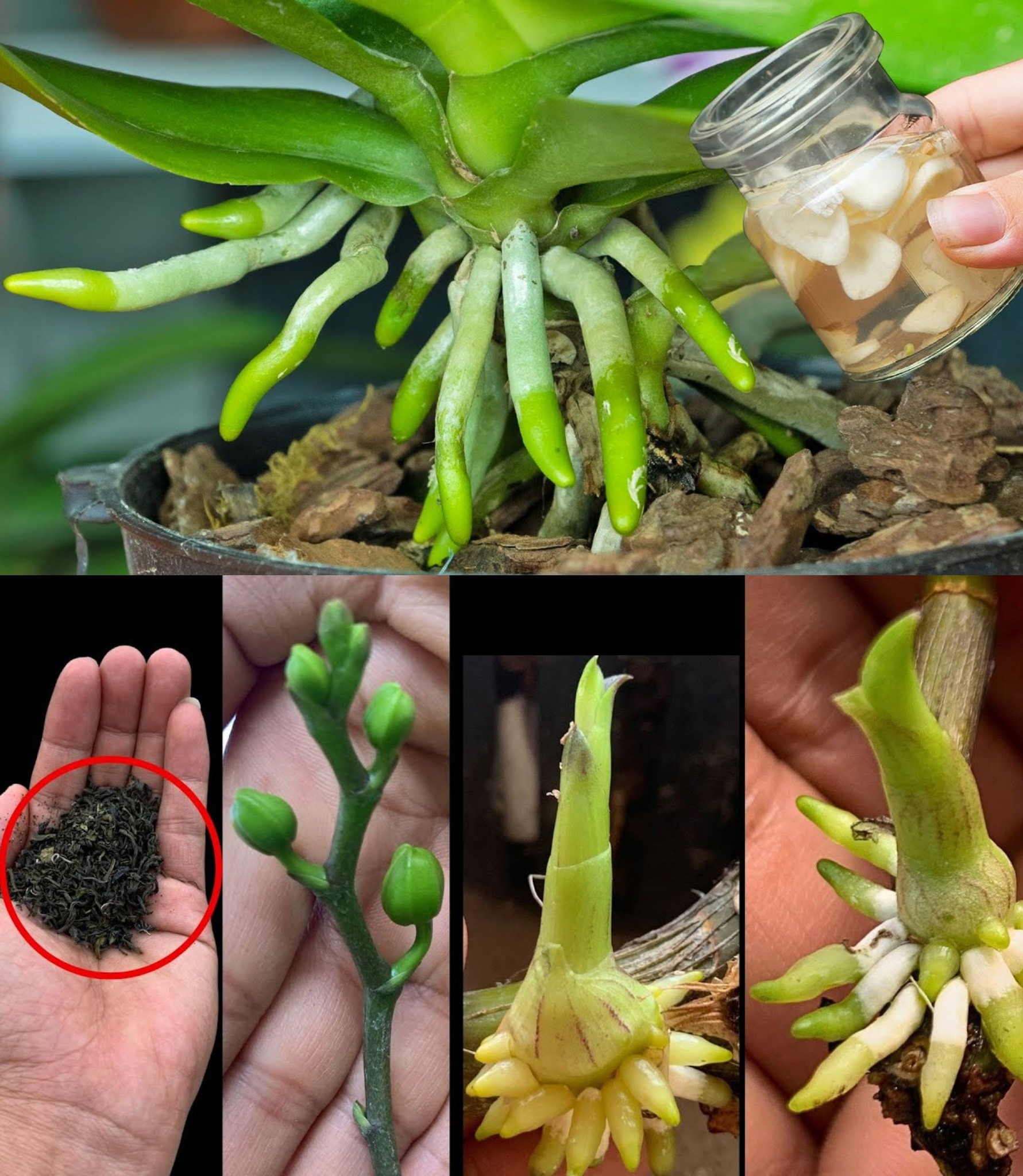
Achieving healthy roots and abundant flowers in your orchids requires providing the right care and environment tailored to their specific needs. Here are some secrets to success:
Proper Potting Medium: Use a well-draining potting medium specifically designed for orchids, such as orchid bark, sphagnum moss, or a mix of the two. Avoid using traditional potting soil, as it can retain too much moisture and lead to root rot.
Correct Pot Size: Orchids prefer to be slightly pot-bound, so choose a pot that allows for some room for roots to grow but isn’t too large. This helps prevent overwatering and promotes healthy root development.
Watering Technique: Orchids should be watered thoroughly but allowed to dry out between waterings. Water the orchid when the potting medium is nearly dry, typically every 1-2 weeks depending on the specific orchid species and environmental conditions. Avoid overwatering, as this can suffocate the roots and lead to rot.
Humidity Control: Orchids thrive in humid environments, so provide adequate humidity by placing a humidity tray filled with water and pebbles beneath the orchid pot. You can also use a room humidifier or mist the orchid’s leaves regularly to increase humidity levels.
Appropriate Light: Orchids require bright, indirect light to thrive. Place your orchid in a location with plenty of filtered sunlight, such as near a south- or east-facing window. Avoid direct sunlight, as this can scorch the leaves.
Air Circulation: Good air circulation is essential for orchids to prevent fungal and bacterial diseases. Place a small fan nearby to ensure air movement around the plant, but avoid direct airflow that may dry out the orchid too quickly.
Fertilizing Routine: Feed your orchid regularly with a balanced orchid fertilizer diluted to half strength. Fertilize once a month during the growing season (typically spring and summer) and reduce or eliminate fertilization during the dormant season (fall and winter).
Temperature Considerations: Most orchids prefer temperatures between 60-80°F (15-27°C) during the day and slightly cooler temperatures at night. Avoid exposing orchids to extreme temperature fluctuations or drafts, as this can stress the plants.
Pruning and Maintenance: Remove dead or yellowing leaves and spent flower spikes promptly to encourage new growth and flowering. Repot orchids every 1-2 years to refresh the potting medium and prevent overcrowded roots.
By providing the right care and environment, you can ensure healthy roots and abundant flowers in your orchids, allowing you to enjoy their beauty for years to come.
